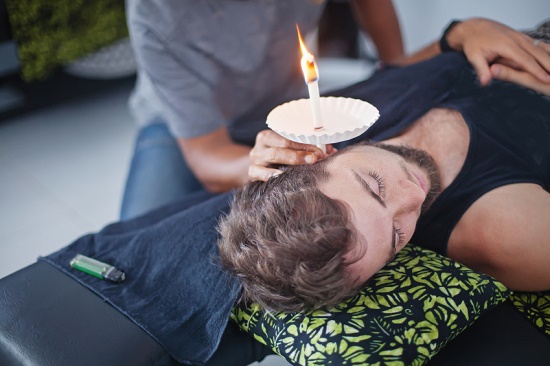
Our ears might be our most mistreated body part. We pierce them, subject them to deafening noise, stuff cotton swabs inside them, and burn them with ear candling. In spite of supplying us with one of our most essential senses, we rarely give our ears, or our hearing, much gratitude or thought.
That is, until there are problems. After that, we recognize just how essential healthy hearing really is—and how we should have practiced proper ear care sooner. The secret is to comprehend this before the harm is done.
If you want to avoid problems and preserve your hearing, stay away from these 4 unsafe practices.
1. Ear Candling
Ear candling is a method of removing earwax, and additionally, as one researcher put it, “the triumph of ignorance over science.”
Here’s how ear candling is carried out. One end of a thin tube made of cotton and beeswax is inserted into the ear. The other end is set on fire, which allegedly creates a vacuum of negative pressure that sucks earwax up into the tube.
Except that it does not, for two reasons.
First, the ear candle doesn’t generate negative pressure. As expressed by Lisa M.L. Dryer, MD, earwax is sticky, so even if negative pressure was created, the pressure called for to suck up earwax would end up rupturing the eardrum.
Second, although the wax and ash resemble earwax, no earwax is in fact discovered within the ear candle after the procedure. Clinical psychologist Philip Kaushall investigated this by burning some ear candles the customary way and burning other candles without placing them into the ear. The residue was the same for both groups.
Ear candling is also harmful and is firmly opposed by both the FDA and the American Academy of Otolaryngology (physicians specializing in the ear, nose, and throat), if you require any other reasons not to do it.
2. Using cotton swabs to clean your ears
We’ve written about this in other posts, but inserting any foreign object into your ear simply drives the earwax against the eardrum, generating an impaction and potentially a ruptured eardrum and hearing loss.
Your earwax is made up of beneficial antibacterial and lubricating properties, and is organically expelled by the normal movements of the jaw (from talking and chewing). All that’s required from you is standard showering, or, if you do have trouble with too much earwax, a professional cleaning from your hearing practitioner.
But don’t take our word for it: just take a look at the back of the packaging of any pack of cotton swabs. You’ll find a warning from the producers themselves advising you to not enter the ear canal with their product.
3. Listening to exceedingly loud music
Our ears are just not equipped to handle the loud sounds we’ve figured out how to produce. In fact, any sound louder than 85 decibels has the potential to create irreversible hearing loss.
How loud is 85 decibels?
An everyday conversation registers at about 60, while a rock concert registers at over 100. But here’s the thing about the decibel scale: it’s logarithmic, not linear. Which means the leap from 60 to 100 decibels does not make the rock concert twice as loud, it makes it about 16 times as loud!
Likewise, many earbuds can create a similar output of 100 decibels or higher—all from inside of the ear canal. It’s hardly surprising then that this can produce permanent injury.
If you prefer to preserve your hearing, ensure that you wear earplugs to concerts (and on the job if necessary) and keep your portable music player volume at about 60 percent or less of its max volume (with a 60 minute listening time limit). It may not be cool to wear earplugs to your next concert, but premature hearing loss is not much cooler.
4. Dismissing the signs of hearing loss
Finally, we have the troubling fact that individuals tend to wait nearly ten years from the start of symptoms before searching for help for their hearing loss.
That means two things: 1) people unnecessarily suffer the negative effects of hearing loss for ten years, and 2) they make their hearing loss a great deal more difficult to treat.
It’s true that hearing aids are not perfect, but it’s also true that with today’s technology, hearing aids are remarkably effective. The extent of hearing you get back will depend on the degree of your hearing loss, and seeing that hearing loss tends to get worse as time passes, it’s best to get tested and treated the moment you notice any symptoms.
